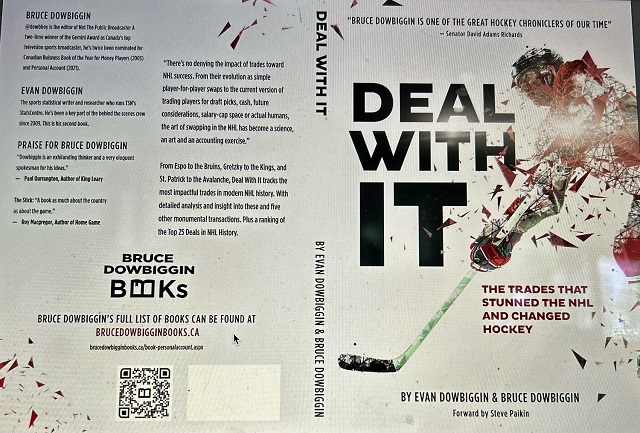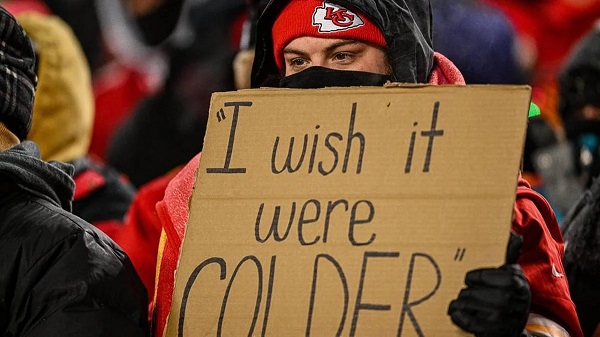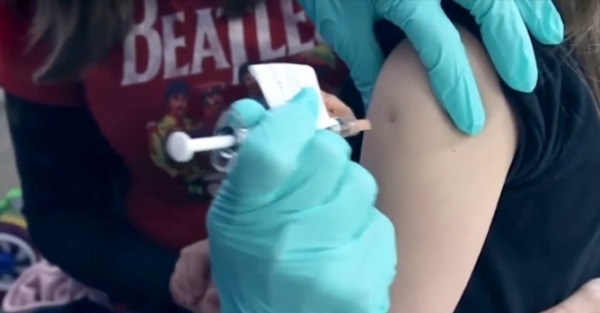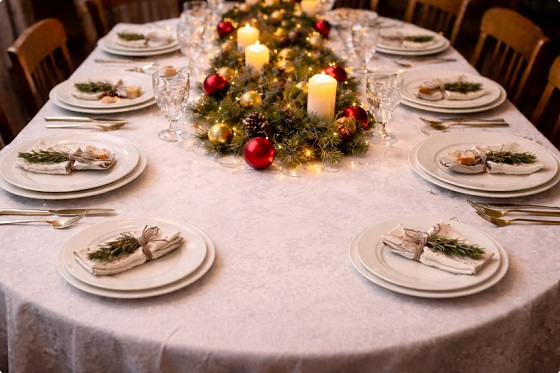Bruce Dowbiggin
Deal With It: When St. Patrick Talked His Way Out Of Montreal

Coming soon, our latest book “Deal With It: The Trades That Stunned The NHL And Changed Hockey”. With my son Evan, we look back to Espo to the Bruins (1967), Gretzky to the Kings (1988) , and St. Patrick to the Avalanche (1995), Deal With It tracks the back story behind the most impactful trades in modern NHL history. With detailed analysis and keen insight into these and five other monumental transactions, Deal With It recalls the moments when history was changed. Plus a ranking of the Top 25 Deals in NHL History.
One of the most memorable occurred 24 years ago, on December 6, 1995: Patrick Roy and Mike Keane from the Montreal Canadiens to the Colorado Avalanche for Jocelyn Thibault, Martin Rucinsky and Andrei Kovalenko. Trading, arguably, the greatest goalie the Canadiens history was the culmination of organizational dysfunction from which it has yet to recover. It begins with the hiring of former Habs Mario Tremblay and Rejean Houle when the Canadiens stumbled entering the 1994-1995 season. It started off well. Then on a November night in Montreal…
“With the team cooling off from their torrid start under (Mario) Tremblay, the Habs were at home for a Saturday night affair hosting a powerful Red Wings team on its way to breaking the NHL single-season wins record set by the 1976-77 Montreal team (62 to that club’s 60). With the closing of the Forum, the arena Roy had once dominated, Patrick’s dominance had become less-than-surefire. (He came in that night at 238-80-34 all-time at the Forum.) All that rich history didn’t help Roy that particular night and before a national TV audience the wheels came off for hundreds of thousands to witness.
Earlier in the day, Roy had had an impromptu breakfast at Moe’s Diner in Montreal with Detroit goalie Mike Vernon, who’d himself been forced out of Calgary after winning a Cup. Roy described his predicament. “It might be time for you to ask for a trade,” Vernon suggested to him. Fast forward to the notorious game. Getting bludgeoned by the Wings attack, Roy had given up nine goals before the game hit its halfway mark. Getting mock cheers for one of his few saves on the night- prompted a seething Roy replied with mock acknowledgement to the crowd. Clearly overwhelmed, Roy was kept in the nets as Tremblay let his star goalie get roasted by Scotty Bowman, who enjoyed getting revenge on his former player Tremblay for some remarks he’d made about Bowman’s coaching style.
Finally hooked after the ninth marker, Roy glared menacingly at his coach as he walked by on the bench. Stopping to take care of more business, he walked back across and, face-to-face, told a distressed-looking Corey that he had just played his last game with the Canadiens. As Roy walked past Tremblay on his way to the end of the bench, Roy and Tremblay glared eye-to-eye. Roy told him in French, “You understand?” This very public moment overshadowed what remains the worst home loss in the club’s storied history, an 11-1 spanking from Detroit. TV highlights that night across North America showed the stare-down.“The whole city was talking about it,” recalled Montreal native Eric Engels. “The team had suspended Roy and said they were going to trade him, and I just remember saying to the bus driver that they didn’t have to go this way, that they could salvage the situation.”
The following days saw the controversy erupt even further. Just months after plucking Houle and Tremblay from outside the organization, Corey sided with his inexperienced newbies and told Roy he would be getting dealt even when Roy apologized for his spat and vowed to mend fences. Typical of the climate at the time for even superior players who “disrespected” the organization, Roy was persona non grata in a matter of days. In his book, Serge Savard: Forever Canadien”, Savard explained the inevitability of the deal: “Patrick had become too important in the club. He took up too much space in the dressing room, had too much influence on the coach. Over the previous years, I had to handle him with kid gloves. I still had the same admiration for him as I did when we won the Stanley Cup in 1986 and 1993, where he played a determining role. But a change had become necessary. The team revolved around him too much. For the good of everyone, he needed a change of scenery.”
Team captain Mike Keane didn’t help lower the temperature at the Forum by claiming the man who wore the “C” with the Canadiens didn’t necessarily need to speak French and that he wouldn’t be bothering to learn it because the dressing room mostly communicated in English (true even in the most predominately French-based Habs teams such as the 1993 Cup winner that boasted no less than dozen Quebecois). Both Keane and Roy would go on the trading block together, joining similarly exiled pieces like Chris Chelios and Guy Carbonneau (the captain of the ’93 Cup winner, dealt after 1993-94 to the Blues for Jim Montgomery, after flashing the middle finger to a photographer who had eavesdropped on him playing a round of golf). Carbonneau’s successor at captain, Kirk Muller— an Ontario boy through and through— expressed how honoured and proud he was to wear the fabled letter patch. But he, too, would find himself gone to the Islanders partway through 1994-95. In other words, almost no one was sacred in Ron Corey’s world. Only four days after his dressing-down of the team president and head coach, Roy was notified by Houle that he had been traded.
Just like that, Montreal had parted with its franchise goalie as if it were still the “Original Six” days and players that got in management’s crosshairs were expendable. How traumatic was the deal for the rookie GM Houle? He’ll never tell. “And that is what I intend to do forever so that I don’t have to look back at a time that was difficult for me.” As for Roy, his take was “It was clear from the organization that they had made their decision. I said, ‘Okay, I’ll accept my mistake.’ I agree I was the one who made that thing happen on that Saturday, and both parties agreed it was in the best interests of us that we go different directions. I understand that you can’t put ten years aside and give it a little tap and it’s all gone. I lived through lots of good things in Montreal, but, again, it’s a turn I accept.”
Bruce Dowbiggin @dowbboy is the editor of Not The Public Broadcaster A two-time winner of the Gemini Award as Canada’s top television sports broadcaster, he’s a regular contributor to Sirius XM Canada Talks Ch. 167. Inexact Science: The Six Most Compelling Draft Years In NHL History, his new book with his son Evan, was voted the seventh-best professional hockey book of all time by bookauthority.org . His 2004 book Money Players was voted sixth best on the same list, and is available via brucedowbigginbooks.ca.
Bruce Dowbiggin
Hunting Poilievre Covers For Upcoming Demographic Collapse After Boomers

For those not familiar with hunting seasons in Canada it may come as a surprise that the nation has a year-round hunting season. That would be the targeting of Conservative leader Pierre Poilievre by the massed army of Liberals, their bots and the richly endowed media pack. Forget he’s never held power. He’s to blame for the ills in Canadian society.
It has been a good hunt. After floor-crossing by dissident CPC, the Liberals are one seat from the majority that Canadian voters denied them in the spring. (They’ll likely get the majority soon.) MPs who a day earlier were at Conservative Xmas parties suddenly sang the praises of Carney. MPs in ridings targeted by the Chinese suddenly joined Team Elbow Up.
All the while the media corps landed blows from their perch. Robert Benzie: “I know that Premier [Danielle] Smith is very unhappy privately with Pierre Poilievre because she thinks that [MOU motion] is undermining this [pipeline] project.” The nadir of the media dog pile was formerly eminent scribe Robert Fife who sniped, “Conservatives persist with cute legislative tricks, while the government tries to run a country.” Run a country. That’s rich.
From his lips to Liberal brains, however. “.@CBCNews and @AlJazeeraWorld viewers consider themselves uniquely informed, says @ElectionsCan_E report. The two TV networks were named by self-described “informed” voters when asked where they got their news. “
It is, seemingly, a great time to be a Liberal. Or not. While Operation Poilievre was gathering steam for Xmas polling revealed that Liberals and Conservatives remain locked in a tie, and Canadians continue to express ambivalence about the country’s direction, mixed feelings about their leaders, and sharp divides by generation, region, and policy concern. These generational discrepancies continue to be buried.

As was the case in the spring, the Liberals are supported only by the Boomer generation that swallowed Elbows Up nostalgia like a fat man on a donut. The under 60s demo at every level shows the current Carney agenda is a loser for them. In the segment of house-rich Boomers the Libs lead 50-31 over CPC. But in every other category it’s “how can I get out of here faster?”
The 45-59 demo it’s 46-36 Conservatives; 30-44 it’s a whopping 48-31 CPC; 18-29 it’s 40-39 CPC. A healthy chunk of Liberal supporting from the collapse of NDP vote. Where they used to poll in the 20s, the highest demo shows 11 percent support. Otherwise Poilievere would be PM.
Meanwhile, research now finds that 54 percent of Canadians say the growing number of newcomers to the country threatens our traditional customs and values— an increase of sixteen points since 2020. Over the same period, the share of Canadians who say immigration strengthens our society fell thirteen points to 35%
In short, the Carney Circus of marrying Canada to China and the EU is a card trick that will be exposed shortly. But where do we see the Ottawa press corps attention to this impending demographic snow plow? As we wrote in March “It’s not hard to see the (under 60s) looking at the Mike Myers obsession with a long-gone Canada and saying let’s get out of here.
Recently former TVOntario host Steve Pakin attended two convocations. The first at the former Ryerson University, (switched to Toronto Metropolitan University in a fit of settler colonizer guilt.) The second at Queens University, traditionally one of the elite schools in the nation. Here’s what he saw.
“At the end of the (TMU) convocation, when Charles Falzon, on his final day as dean of TMU’s Creative School, asked students to stand and sing the national anthem, many refused. They remained seated. Then, when the singing began, it was abundantly noticeable that almost none of the students sang along. And it wasn’t because they didn’t know the words, which were projected on a big screen. The unhappy looks on their faces clearly indicated a different, more political, explanation.
“I asked some of the TMU staff about it after the ceremony was over, and they confirmed what I saw happens all the time at convocations. Then I texted the president of another Ontario university who agreed: this is a common phenomenon among this generation at post-secondary institutions.”
At Queens, where Canadian flags were almost non-existent, O Canada was sung, but the message of unrest was clear: “Convocation sends a message of social stability,” Queen’s principal Patrick Deane began in his speech. “It is a ceremony shaped in history. You should value your connection to the past, but question that inheritance. Focus on the kind of society you’d like to inhabit.”
You can bet Deane is not telling them to question climate change and trans rights. As Paikin observes, “if we fail to create a more perfect union, we shouldn’t be surprised when a vast swath of young people don’t sing our anthem the way so many of the rest of us do.” So why are the best and brightest so reluctant to see as future in becoming the new professional class that runs society?
In the Free Press River Page searched the source of their discontent. “If the Great Recession, Covid-19, and the spectre of an artificial intelligence-assisted ‘white collar bloodbath’ has taught the professional class anything, it is that their credentials cannot save them. This insecurity, compounded by the outrageous cost of living in many large cities, has pushed the PMC’s anxieties to the breaking point.

“Add that to the triumph of identity politics in professional class institutions like universities, corporate C-suites, non-governmental organizations, and media—itself a byproduct of inter-elite competition as many have observed—and what you have is the modern left.
“… they’ve already come to the baffling conclusion that there’s no difference between class struggle and child sex changes. More to the point, the socialist mantra “From each according to his ability, to each according to his need” has only ever stood the test of time in Anabaptist sects. It requires a religious devotion to self-sacrifice that is not characteristic of this anxious and hyper-competitive class—as many actual socialists have spent the last decade warning.”
The tsunami over immigration has caused severe dislocations— as PM Steven Harper predicted in the 2015 election debate. He was shouted down by the dopey dauphin Justin Trudeau who opened the sluice gates to every kind of progressive nonsense. Which is now evident.
Like all people addicted, CDN Boomers don’t want the truth. They want performance theatre, T-shirts and hockey games. They blame Trump for their predicament, caught between grim realities. Will they take the 12 steps? Or will their kids have to tell them the facts as they escort them to the home?” We’re now seeing the likely answer to that question everywhere in Canadian society.
Bruce Dowbiggin @dowbboy is the editor of Not The Public Broadcaster A two-time winner of the Gemini Award as Canada’s top television sports broadcaster, his 2025 book Deal With It: The Trades That Stunned The NHL And Changed hockey is now available on Amazon. Inexact Science: The Six Most Compelling Draft Years In NHL History, his previous book with his son Evan, was voted the seventh-best professional hockey book of all time by bookauthority.org . His new poetry collection In Other Words is available via brucedowbigginbooks.ca and on Kindle books
Bruce Dowbiggin
NFL Ice Bowls Turn Down The Thermostat on Climate Change Hysteria

Oh, the weather outside was frightful. But the football was so delightful. Week 15 of the NFL season was a cryogenic success of snow and sub-zero temperatures. Here were the temperatures at game time this weekend.
Chicago: -11 degrees C.
Cincinnati: -12 degrees F.
Kansas City: -8 degrees C.
New England: -2 C (with an 87 percent chance of snow).
Philadelphia: -2 degrees C.
New York -1 degree C.
Pittsburgh: -7 degrees C.
For fans of NFL football none of this seemed out of character with late-season football. There are legendary games played in arctic conditions. The windchill for the 1967 Dallas/ Green Bay NFC championship was -25 C.
Chargers at Bengals: Jan. 10, 1982 (-24 C, feels like -39 C).
Seahawks at Vikings in NFC wild-card matchup Jan 10, 2016. -21 C with wind chill -25C
Dolphins at Chiefs: Jan. 13, 2024 (-4 degrees, feels like -27 degrees)
As recently as last week’s Bills win over the Bengals games are often played with drifts of snow on the field and the mercury bottoming out. While Canada’s Grey Cup game is played at the end of November it’s still had some brutal weather history of its own.
The point of this meteorology meandering is that, according to our good King Charles III and many other doomsday cultists the concept of snow and cold was supposed to be a figment of the past by now. For almost half a century Michael Mann and the climate prophets of IPCC have been predicting the end of snow and the onset of warmist floods and burning forests. They gambled trillions of the public’s dollars on the certainty that the public would buy computer modelling and data-distortion predicting doom.
For decades it has worked. The careers of people like critic Mark Steyn have been ruined, heretics declared and fortunes dissipated by the trust-fund fanatics who bankroll wackadoodles like Stephen Guilbeault, the convicted felon who Trudeau made Minister of the Environment. No matter how absurd or devious the source, it was a gospel that the fiery inferno was coming next Tuesday. But the weather has remained stubbornly resistant to Elizabeth May’s catechism of climate.

Yet, some dedicated climate advocates and their followers are finally changing their tune in the face of their own observation of lying liars like Al Gore and Greta Thunberg. The share of Americans who say climate scientists understand very well whether climate change is occurring decreased from 37 percent in 2021 to 32 percent this year. A similar October study from the University of Chicago’s Energy Policy Institute found that “belief in human-driven climate change declined overall” since 2017.
Reports the uber-liberal L.A. Times: “The unraveling of climate catastrophism got another jolt recently with the formal retraction of a high-profile 2024 study published in the journal Nature. That study — which had predicted a calamitous 62% decline in global economic output by 2100 if carbon emissions were not sufficiently reduced — was widely cited by transnational bodies and progressive political activists alike as justification for the pursuit of aggressive decarbonization.
But the authors withdrew the paper after peer reviewers discovered that flawed data had skewed the result. Without that data, the projected decline in output collapses to around 23%. Oops.”
Even stalwart media apologists for climate hysteria like the Times are starting to have doubts. Under the headline “The left’s climate panic is finally calming down” they describes “Erstwhile ardent climate-change evangelist Bill Gates published a remarkable blog post addressing climate leaders at the then-upcoming COP30 summit. Gates unloaded a blistering critique of what he called ‘the doomsday view of climate change,’ which he said is simply “wrong.”
Trump-besotted American Democrats seeking to soften their Woke image before the 2026 midterms are likewise carving out more moderate positions on climate “that could well deprive Republicans of a winning political issue with which to batter out-of-touch, climate-change-besotted Democrats. But for the sake of good governance, sound public policy and the prosperity of the median American citizen, it would be the best thing to happen in a decade.”
Sadly Canada under Mark Carney remains a staunch climate warrior. The removal of Guilbeault as federal Environmental Minister may have seemed a step toward sanity, but there is no hint that the billions of dollars from hidden money spigots will be closed down any time soon. The B.C. government’s acquiescence to the climate propaganda of Indigenous bands shows no sign of abating. Indeed, it is just ramping up in the land claims that threaten to make home ownership a thing of the past.

PM Mark Carney is a dedicated temperature fabulist going back to his days as governor of the Bank of England. His first fights in Canada were over taxing carbon and hobbling her energy industry. As we wrote in this November 2024 column, the certainty in which the Canadian Left revels is actually dividing, not uniting citizens.
So perhaps if enough citizens spend an afternoon shivering in the stands of a wintertime football game we might achieve a small piece of sanity and learn that that , while climate is always changing, it’s not worth the price we’ve paid this century.
Bruce Dowbiggin @dowbboy is the editor of Not The Public Broadcaster A two-time winner of the Gemini Award as Canada’s top television sports broadcaster, his 2025 book Deal With It: The Trades That Stunned The NHL And Changed hockey is now available on Amazon. Inexact Science: The Six Most Compelling Draft Years In NHL History, his previous book with his son Evan, was voted the seventh-best professional hockey book of all time by bookauthority.org . His new poetry collection In Other Words is available via brucedowbigginbooks.ca and on Kindle books.
-

 Business2 days ago
Business2 days agoTaxing food is like slapping a surcharge on hunger. It needs to end
-

 Health2 days ago
Health2 days agoFDA warns ‘breast binder’ manufacturers to stop marketing to gender-confused girls
-

 International2 days ago
International2 days ago2025: The Year The Narrative Changed
-

 Business1 day ago
Business1 day agoThere’s No Bias at CBC News, You Say? Well, OK…
-

 Uncategorized18 hours ago
Uncategorized18 hours agoMortgaging Canada’s energy future — the hidden costs of the Carney-Smith pipeline deal
-

 Health2 days ago
Health2 days agoAll 12 Vaccinated vs. Unvaccinated Studies Found the Same Thing: Unvaccinated Children Are Far Healthier
-

 Agriculture2 days ago
Agriculture2 days agoSupply Management Is Making Your Christmas Dinner More Expensive
-

 Daily Caller2 days ago
Daily Caller2 days agoTrump Reportedly Escalates Pressure On Venezuela With Another Oil Tanker Seizure









